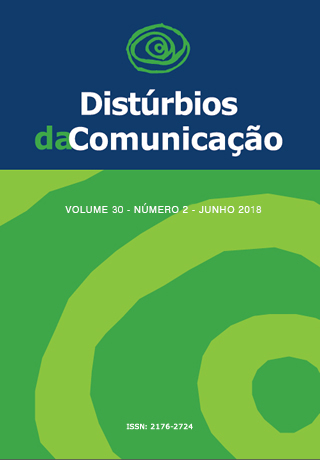Analysis of difference between the behavioral hearing thresholds and the results obtained through the auditory steady state response (ASSR) in young adults
DOI:
https://doi.org/10.23925/2176-2724.2018v30i2p-376-384Keywords:
Hearing, Auditory Threshold, Pure Tone Audiometry, Evoked Response Audiometry.Abstract
Introduction: Hearing is the sense which allows us to receive auditory information; therefore it facilitates efficient social interaction. Any loss in this function damages the communicative process, so it must be diagnosed and treated as soon as possible. Nowadays, both objective and subjective hearing tests are available. Pure Tone Audiometry is the most widely used subjective way to evaluate this sense. However, for those who are unable to respond subjectively, we can try objective techniques like the Auditory Steady State Response. Both will search for patients’ minimum hearing responses, applying different approaches. Objective: To evaluate normal-hearing young adults with no hearing complaints by analyzing their hearing sensibility and, based on statistical indicators, calculate the average of the differences between the results obtained in both procedures in order to verify the existence of correlation between them. Method: We studied the hearing responses from 30 normal-hearing subjects through Pure Tone Audiometry and Auditory Steady State Response at 500, 1000, 2000 and 4000 Hz. Results: When we calculated the average of the differences between the tested frequencies, they ranged from 10,47 to 18,22 with no strong correlation, except at 1000 Hz whose results were uncertain. Conclusion: We concluded that the average of the differences of hearing values obtained in Pure Tone Audiometry and Auditory Steady State Response were reasonably elevated mainly at 500 Hz, and at a lower level at 4000 Hz. Although the scores obtained in both tests had not shown strong correlation, they were slightly better at 500 Hz. The results for 1000 Hz are inconclusive regarding any existing correlation between these two tests.Downloads
Downloads
Published
Issue
Section
License
Copyright (c) 2018 Alessandra Rabello de Oliveira Lamenza, Jair de Carvalho e Castro, Daniela Cecílio Capra Marques de Oliveira

This work is licensed under a Creative Commons Attribution 4.0 International License.









